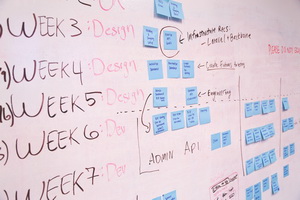Product Development: What to Know Before Outsourcing
In today’s changing industrial climate, only the businesses with the most effective product development strategies can stay ahead of their competition. The rise of e-commerce and other cost-reducing business strategies have allowed aggressive startups to compete with industry mainstays, which means that whether you’re improving existing products or identifying new market niches, you need to do it fast, fast, and fast.
Many manufacturers overcome challenges in product development by pursuing aggressive outsourcing strategies. Outsourcing aspects of your production process saves money and improves turnaround times, and doing so also allows qualified experts to handle the manufacturing while you dedicate more resources to branding and R&D.
Understanding Product Development
What is Product Development?
Product development is an umbrella term that encompasses an item’s journey through conceptualization, design, production, and sales. During product development, business owners identify new or underexploited niches in the market and attempts to design a product that satisfies untapped demand. In other cases, manufacturers find ways to improve existing products to adapt to the market’s changing. Product development can last anywhere from a few short weeks toyears as manufacturers fine-tune their products.
Signs You Need a New Product
You can usually tell when it’s time to embark on a new product development process. For one example, if sales are steadily decreasing for no particular reason, it may be a sign that consumers have grown too accustomed to your product and it needs a refresh.
Other metrics could also signal the need to update your product offerings, such as:
- Increasing pressure to lower prices
- Increasing turnover in your sales force
- Fewer inquiries from prospective clients
- Clients systematically suggesting product changes
- Competitors exiting the market
The Different Product Development Steps
The product development process consists of numerous steps:
- Idea generation
- Idea screening
- Concept testing
- Business analysis
- Product development
- Test marketing
- Commercialization
- Review of market performance
Many of the earlier steps occur in-house or through collaboration with consultants. Gradually, as you branch out toward actual development, test marketing, and commercialization, you may bring in external designers, other manufacturers, and even members of the public (to help with product testing).
Product Development Outsourcing
Outsourcing Versus In-House Product Development
Outsourcing refers to when businesses reach a formal agreement with a third party to perform some of the processes that the client business would otherwise handle. Service offerings can vary widely—businesses outsource everything from manufacturing to payroll processing to tech support and customer services.
If you’ve never done it before, outsourcing your processes can seem like a daunting task, and in-house development definitely comes with several advantages. In-house development projects offer you complete control over the creation and delivery of your product, and they allow you to gain more hands-on experience with the ins and outs of your processes.
However, in-house production also takes time and resources away from tasks more central to your business. An external manufacturer usually has the specific expertise to build one aspect of your end product really well, using material sourcing and time-saving techniques that they’ve honed over years of experience. Additionally, because they usually work with multiple clients at once, external firms can usually offer lower costs for their services than than what can be achieved in-house.
Should You Outsource?
Outsourcing doesn’t make sense for every project, but for those building large or complex materials, it can be an excellent way to speed the production process. Outsourcing is also a great way to develop new ideas—a fresh set of eyes may see more efficient ways to improve your product.
Developing a Product: Five Tips for Outsourcing
In short, it’s important to keep the following tips in mind when implementing a comprehensive outsourcing plan:
- Retain as much control of your product as possible
- Implement checks and balances to reduce risk
- Hire specialized engineers
- Avoid putting all of your eggs in one basket
- Act as a manager during the process to save cash
Develop Your Product with Paragon Innovations
Paragon is proud to offer our clients a variety of outsourcing services. We leverage a tiered product development process aimed at meeting your requirements regardless of your development stage. We design all products with numerous quality assurance procedures in mind, and we can tailor our processes to meet FDA requirements as needed.
For those interested in a more complete overview of our services, download our Outsourcing Guide for an outline of the process. In addition, check out our Outsourcing Frequently Asked Questions.
If you would like to learn more about how teaming up with Paragon will benefit your next project, contact us today to request a free quote.
